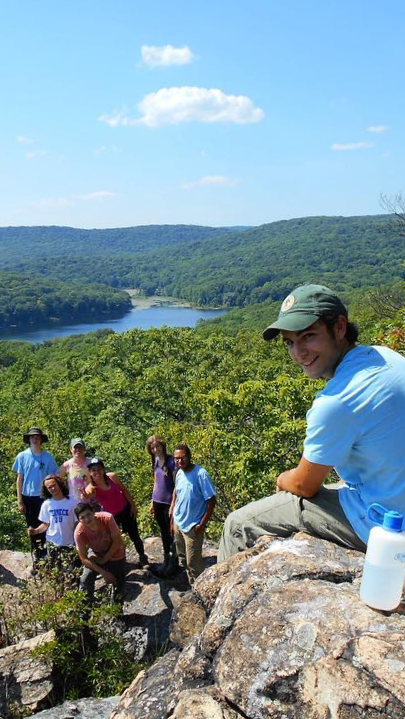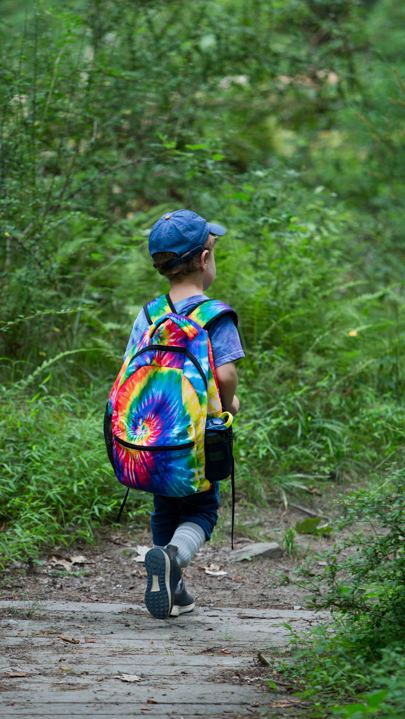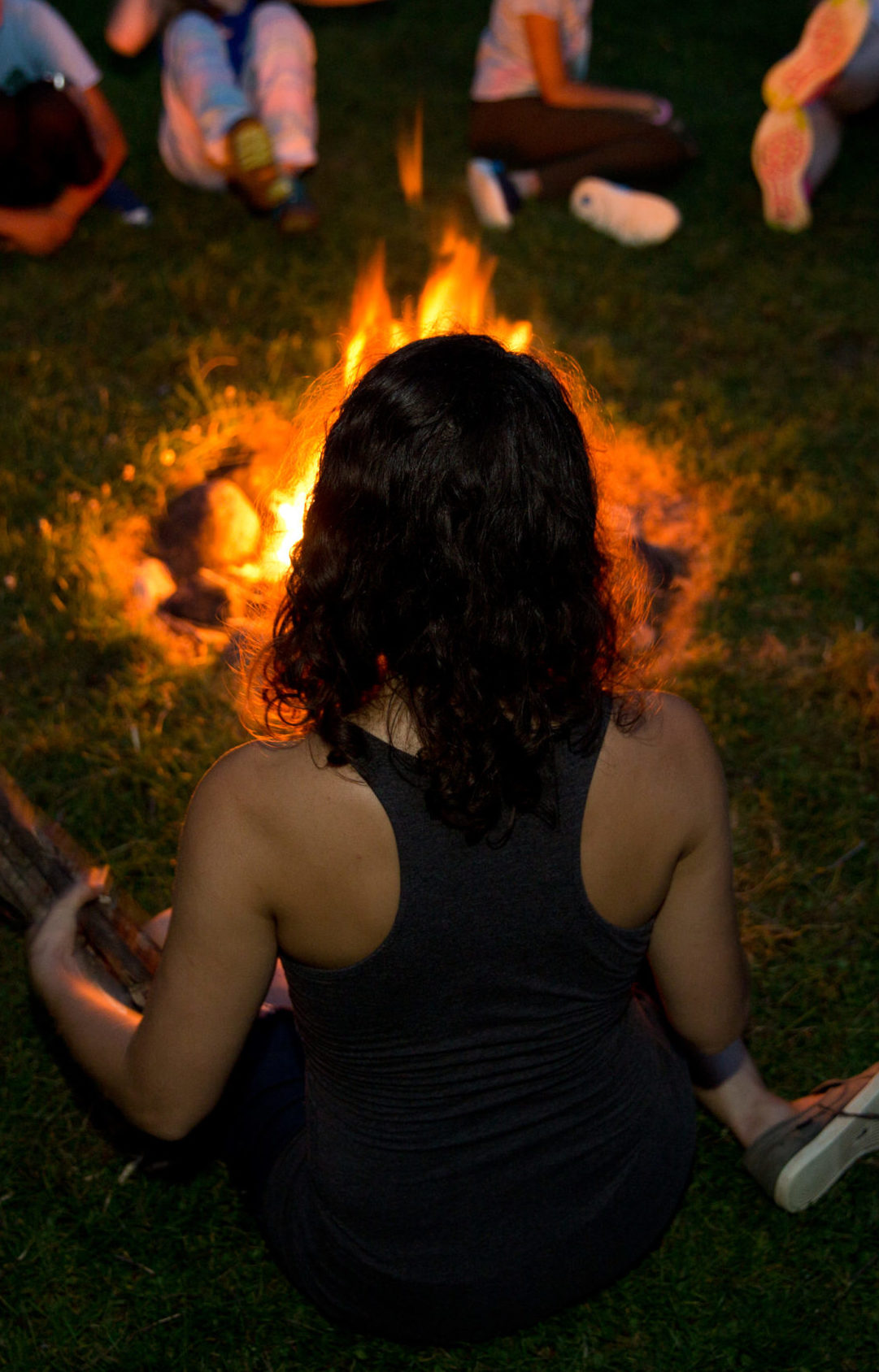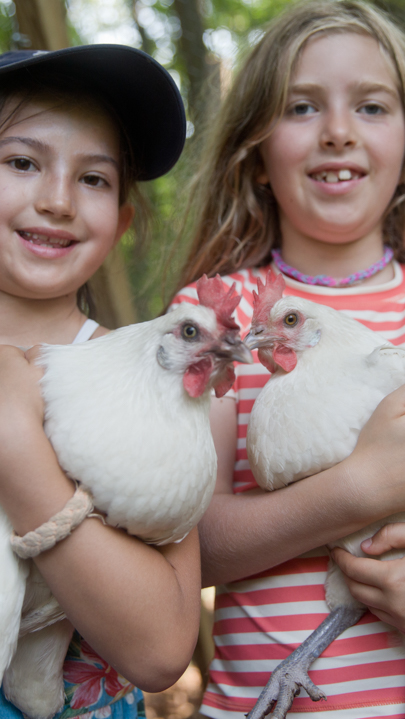Be Amazed

BE AMAZED: WHAT COLOR IS THE WIND? A CONVERSATION WITH ED BIEBER AND DALE HUSHBECK
By Donna Lee Miele
I. Ed Bieber: From Veteran Naturalist To Author
Sometime in 2005, Ed Bieber, Rockland naturalist and teacher for over 40 years, was diagnosed with Parkinson’s disease.
“What are my prospects?” he asked his doctor. Ed wanted to know whether he should modify his daily activities, which included taking groups of 30 or more grade-school children on miles-long hikes through Rockland’s rich natural park areas, four seasons round, rain or shine; and in the summer, directing the Nature Place Day Camp in Chestnut Ridge, New York, for hundreds of campers living in the tri-state area.
The doctor told Ed that his hiking days were over. “You’ll have to take it easy,” he said. “A slow walk to the stream behind your house and back every day. That’s all you’ll be able to manage.”
But in the ensuing years, although Ed Bieber has spent a lot of time in the backyard, he has managed much more than that daily stroll. In addition to keeping up many of his activities with Rockland schoolchildren and the Nature Place Camp, Ed used long, sleepless nights, one of Parkinson’s hallmarks, to author What Color Is The Wind? A Feel Guide to the Out-of-doors for Parents with Young Children.
“I felt sharply awake between one and five in the morning,” Ed says. “I said, let me see what I can write. Let me go back to all these notes from all these years about nature and what happens during the seasons of the year, and combine it with what I know about parents, kids, and nature, and put something down that would just make sense, that would not scare away parents, that’s not rocket science, that would make them feel easy and comfortable in the out-of-doors.”
With the gesture of a wise friend extending hands to a parent and a child, the author of What Color Is The Wind? offers pages of family nature activities that require no more than “…a season (one of four); a yard (back, front, or some other slice of nearby nature; a crack in the pavement will do)… [and] time (2 minutes, 10 minutes, a half hour—again, it’s up to you and your child).”
II. Inspiring Wonder: What Color Is The Wind?
The question in the book’s title came from a four-year-old student, gazing up into autumn treetops swaying in the breeze. “She’s in her mid-thirties by now, but her words still echo in my mind,” Ed writes. Readers, and also Ed’s friends, family, students, and campers, will often hear him offer one simple guideline for experiencing nature, inspired by years of working with questioning four-year-olds: “Be amazed!”
“We need to start with wonder,” he says. “It’s right outside your door! I’ve always worked that way.”
The book is designed to follow the seasons of the Northeast, but many of the activities are adaptable to any region of the world.
Ed’s favorite activities for autumn, for instance, involve creating beautiful collages with wet leaves, an abundant resource that is not limited to autumn in New York. For Autumnmobile, “After a rainy fall day (or during one, if it’s not coming down too hard), decorate a fender of your wet car—the whole car, if you’re ambitious—with a leafy mosaic. The wet leaves will stick, at least for a while; the water will act like glue. You don’t even have to wait for a rainy day, for that matter. Just get a bucket of water, let a bunch of leaves soak in it for 10 minutes or so, wet down the car, and start pasting. Be creative with colors and shapes, and the varied sections and curves of your automotive canvas.”
Other favorites for the four seasons:
Winter: Shadowy Walks—Night. “The winter moon comes up early… stays up in the sky for a long time, and its bright light allows you to see and travel farther in the night without a flashlight… Walk the moon-shadowed outline of your house, or nearby trees. Visit familiar spots… do they feel the same under the light of the moon?”
Spring: No Mow Zone. “Lay claim to a section of lawn, one square foot… maybe a square yard. Mark it off with stakes so it won’t be mowed or weeded from this day until the snow flies again. Observe as the weeks and months go by. Take photos. Get down on your hands and knees and see what’s there. Conduct tours. Keep a diary. Give your little untrammeled spot a name… Become an ‘expert’ on your piece of the planet.”
Summer: Summer’s Natural Moments. “The daytime, high-pitched shrill of cicada insects from the treetops ‘announcing’ a hot day… the evening calls of the katydids (cousins of the grasshopper and cricket), from what seems like the exact same places where the cicadas were calling during the day… summer sounds like Ray Bradbury’s ‘bee-fried air’… the majestic, powerful, slightly scary but always dramatic approach of a thunderstorm… the first morning of relief after a long siege of hot, humid weather, when there’s a cool breeze, blue sky, high white fair-weather clouds, and you feel like you can breathe again.”
III. Dale Hushbeck: Designing For Interactivity (In Print)
The cover of What Color Is The Wind? draws a reader’s gaze into a mass of wind-tossed leaves, to find a child’s face gazing back from the heart of the tree. British photographer Suzanne Pinnington took the stunning image of painterly greens, both warm and cool. The book’s editor and designer, Dale Hushbeck, added the little boy, producing a cover that inspires a reader’s interest and touch. This is a book that feels good in the hand and in the lap. Opening What Color Is The Wind?, the reader finds pages filled with uncrowded text, simple line drawings… and Calvin and Hobbes! And noting the width of the spiral binding, a reader might just realize that it’s wide enough to carry a writing implement.
“That’s Dale!” says Ed. “The mood I wanted to come out in this book, comes through my writing, but also comes through the design of it. When Dale showed me the cover, I said, yeah! That’s what I want! And the graphic, and the spiral!”
The point of the design, with a sturdy cover, spacious square format with plenty of white space on the pages, and a spiral binding, was that “You want to be able to take it outdoors,” agrees Dale. “When you have it open to an activity, you open it, and it’s going to stay open… you can use it as a little writing desk.”
Dale has a long history in thoughtful graphic design. He took to the graphic arts as a teenager, and found an opportunity to broaden his skills years later, during a stint as a journalist in Washington, D.C. “I have a journalism degree from the University of Maryland,” Dale says, “and after graduation in 1976, I worked for a couple of years at the National Cathedral. And that was the last time I actually worked in the field that I had my degree in. Because the Cathedral was on an austerity budget at the time, and couldn’t afford to hire their quarterly magazine’s designer, a guy named Hubert Leckie, or their photographer-of-record, Morton Brofffman, for many of the projects they would have handled in the past — I was asked to fill in as I could. The things I did were crude compared with their work, but those two men were extremely generous with their advice and encouragement. The two years I spent with their guidance are the closest thing I’ve had to a real training in what became my craft.”
His career in design blossomed over the years, and he found a niche among a clientele centered in Chestnut Ridge, New York, that sought him out as a wordsmith as well. “What I found I had that was most distinctive, in terms of a skill set, didn’t directly relate to design, it related to the sense that the words made with the design.”
Over the years, Dale’s facility with both design and editorial aspects of print projects brought him high local regard. Ed first asked him to work with the Nature Place Camp in producing brochures in the 1990s. From there, the friendship grew, until in 2004, Dale found himself designing Ed’s wedding announcement. When the time came for Ed to find an editor and designer for What Color Is The Wind?, therefore, there was no question that Dale would be at the top of the list.
This is the first book with which Dale has worked so closely with the author. “Dale took my words and made them better,” says Ed. “I look through the book and I see Ed-Dale-Ed-Dale!”
Dale concurs, “We share a single brain.”
IV. A Feel Guide: An “Analog” Experience For Children And The Adults Who Love Them
“This book is about contact,” states the introduction to What Color Is The Wind?, “—parent and child together in nature, making contact with each other, the ground, the sky… and everything in-between.”
As a designer who puts great thought into his project’s purpose, Dale’s hopes for What Color Is The Wind? go beyond readers experiencing an interesting and beautiful book. He’d like the book to appear for circulation in libraries, with an envelope included that would allow readers to share their thoughts, and perhaps even their natural treasures. “The illustrations are just line drawings, to encourage you to color them. The margins are wide, to encourage you to take notes, or for your child to draw that butterfly, that bug. We want to encourage them to think about the book as interactive. But not involving a computer!”
Ed adds, “There will never be a Kindle version of this book. It’s about engaging your senses… It’s a Feel Guide!”
“The book is experiential in focus and thrust,” says Dale. “So—just get outside, pick up the stone, and see what’s underneath it!”
“I don’t know what the kids will be learning,” Ed muses. “I don’t know the specifics of what they’ll find outside… If you’re in Hawaii, you’re going to find different things in your backyard than in Maine. But these activities are appropriate for each of those environments, too, and each of the seasons.”
While teachers may find What Color Is The Wind? a handy reference, if they want to fill up a science lesson with outdoor activities, at the heart of this book is not a checklist of facts or figures. It’s more in the spirit of a collection of wise verses from which a reader’s creativity may spring.
“It’s for grandparents, of course,” says Ed. “It’s for camp counselors, early childhood educators…”
“Nature lovers!” adds Dale.
“And policemen!”
“But the primary audience is still parents and their children.”
“Bottom line,” Ed finishes, “what I hope for, is that more kids get outside with their parents. For two kinds of connection. With the earth, and with the parent… it’s something I never had as a kid. I wanted it… You always teach what you need to know. Maybe this is part of it.”
What Color Is The Wind? is written and designed, first and foremost, to lead you and your child out the door, with a sense of adventure. Whether you decide to plaster the car bumper with leaves, or form a new relationship with your dandelions, is up to you.
“Donna Lee Miele co-publishes the Rockland County Times with her husband, Ken Herndon. The Miele-Herndon children and the Bieber children have wondered and wandered together at Ed’s side for years. With great excitement, Donna and Ken applaud the publication of What Color Is The Wind?”




